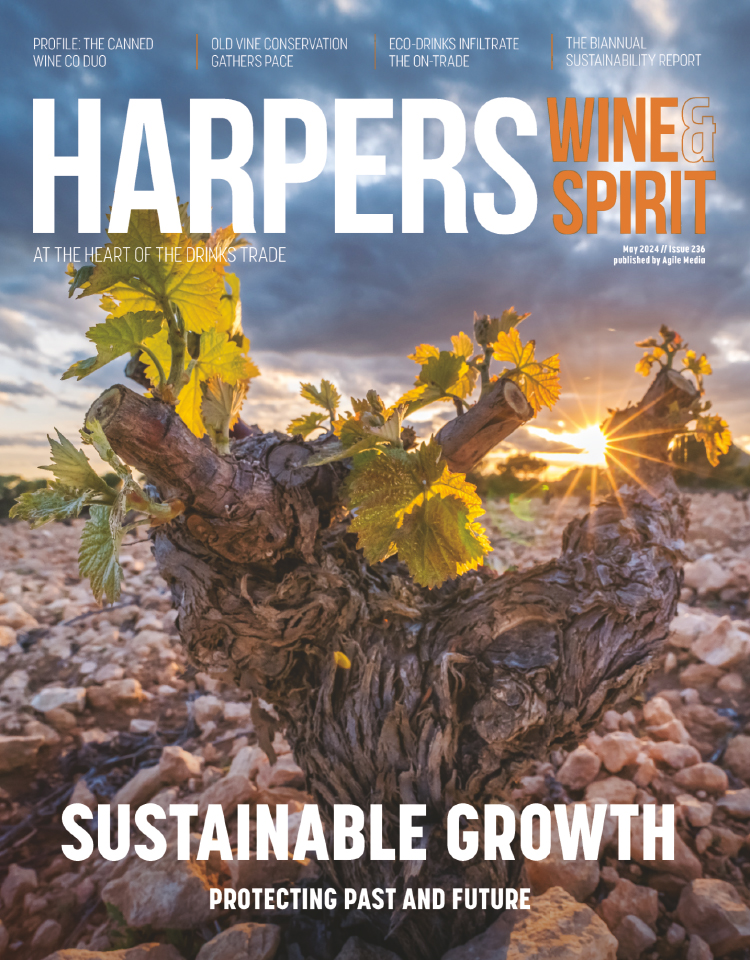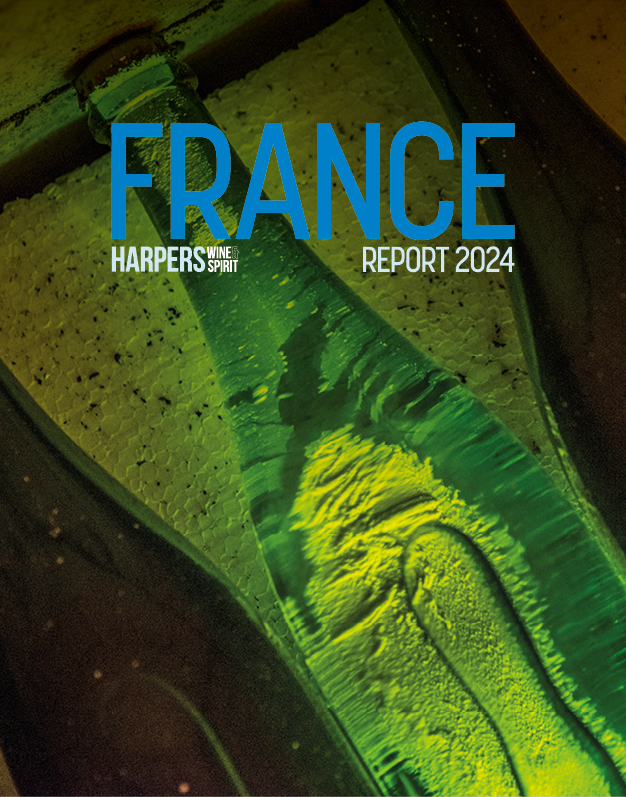Comment: Andrew Catchpole documents the rise of the super sommelier
A new breed of wine expert has transformed the traditional role of sommelier, says Andrew Catchpole.
A new breed of wine expert has transformed the traditional role of sommelier, says Andrew Catchpole.
Both the role and popular perception of the sommelier has evolved over the past decade or so. In an echo of the path that chefs have embraced, downing toques and surfacing from their kitchens with personalities blazing, sommeliers have cast aside the dour penguin and tastevin image, emerging as modern masters of the wine scene.
Obvious examples include Hamish Anderson, author, columnist and very English vinous counterpoint to Nicolas Serota at the Tate galleries, the published and popularist Matt Skinner who rose to prominence at Jamie Oliver's Fifteen or wine millionaire Gerard "The Nose" Basset, co-founder of Hotel du Vin and now master of TerraVina. Elsewhere, the wine trade is peppered with those who cut their teeth wrestling with corks and customers on the restaurant floor, and have gone on to become significant players in the world of wine.
"The role has changed in the past 10 years and is much better understood by the public," says Basset. "This is because many more people are doing the real job of a sommelier, selecting and buying wine as well as selling, building a team, managing stock, thinking commercially, and there are more English people, more women and more quality in terms of those who are attracted to the job."
That the role has attracted greater recognition, and a high calibre of employee, can also be explained with a spot of number crunching. The rise of Britain's restaurant culture, and with it the growth of mid to high-end restaurant groups, has led to a greater understanding of the commercial importance of the wine and drink side of the business, both in terms of matching the drink offering to the aspirations of the kitchen and the all important bottom line. At the top end, million-pound turnovers repay exacting management and so the focus on wine and drink as a "business within a business" has increasingly been sharpened.
"Drinks account for around 40% of turnover in the group," reveals Ian Waddington, UK group wine buyer at Gordon Ramsay Holdings. "We purchase around 25,000 cases of wine a year, a spend of £4 million, and employ 35 sommeliers across the restaurants to manage and sell the majority of this wine."
In Ramsay's gastropubs the wine is left to sell itself off the list, but at high-end operations, such as Claridge's and Maze, teams of up to six sommeliers are empowered to oversee what is on the list, juggle margins and stockholding and, most importantly, drive sales. With a head sommelier in a top London eatery earning around £30,000 a year (excluding tips), Waddington is clear that these employees and their teams have to pay their way.
And pay their way they do. The uplift from introducing good sommeliers is illustrated by Claire Thevenot, ex-Hotel du Vin sommelier turned London on-trade sales manager for Enotria. "While at Hotel du Vin I moved from Brighton to Winchester where we upped the number of sommeliers from one to three on the floor," she says. "The result, in this small restaurant, was that the average monthly spend on wine increased from £15-£23 a head."
Chris Zoeller, head sommelier at Asia de Cuba in Ian Schrager's St Martin's Lane hotel, is equally clear on the importance of the sommelier to the business. "Perceptions have changed and the old idea of not trusting a sommelier has been replaced by customers who are far more adventurous with their eating out, far more knowledgeable about wine and far more open to recommendations," he says.
"Without my recommendations people chose first on price, perhaps spending £40-£50 on a bottle of wine, but if I can gain the confidence of the customer and then recommend a selection of wines at £40, £60 and £80, then seven out of 10 people will generally take a higher-priced recommendation at £60 or £80."
With Asia de Cuba representing a large chunk of the hotel's £2 million drinks turnover a year, the effect on the bottom line is clear. The point, though, is not all about upselling (though this is clearly a huge potential benefit), but the overall importance of running the drinks side of a restaurant business and also how this equips modern-day sommeliers with the skills to move beyond the floor. Hamish Anderson, who first trained as a sommelier at Bibendum restaurant (with wine turnover upward of £1 million a year), now as group wine buyer is responsible for the drinks offering the multiple F&B outlets of the various Tate galleries. Drinks account for 43% of a £13.5 million turnover.
"There has been a growing understanding that the person in a restaurant who oversees and influences perhaps 30%, 40% or 50% of the business turnover should be involved in the business at every level," Anderson says. "This means all aspects, from staff costs, training, margins, buying, stock control, even glassware, just as a head chef is expected to manage costs, ordering and staff in his or her area." In essence, the role of sommelier has increasingly overlapped with that of running a key aspect of the business.
The net result has been a rise in the skill base, recognition and thus employability and potential adaptability of leading sommeliers. Training and qualifications, such as the Master Sommelier award offered by the Court of Master Sommeliers (aligned to the Academy of Food & Wine), plus competitions and gongs have also contributed to both profile and professionalism.
The likes of Anderson and Basset lead a new pack of super sommeliers, those at the top of their profession, many of whom have broken out way beyond the traditional sommelier role.
The paths are numerous, with consultancy, writing, restaurant ownership, group buying and F&B management, brand ambassador roles, sales and setting up as a wine merchant all now increasingly well-trodden routes.
Matt Skinner now splits his time between writing and consulting from his Melbourne home. Some, like ex-Le Manoir head sommelier Xavier Rousset, have gone on to open restaurants, in his case with chef Agnar Sverrisson at London's Texture.
Matt Wilkin swapped a head sommelier role at the two-starred Capital Hotel to open an award-winning, wine-oriented gastropub, the Princess Victoria, in West London.
Others, such as Bruno Besa, founder of Astrum Wine Cellars, and Frédéric Grappe,
of Dynamic Wines, have set up shop supplying the trade. Frank Massard, once at Orrery, switched to a roving global ambassador role for Torres wines before setting up a corporate-oriented wine business in Barcelona, while another ex-Conran/D&D restaurant luminary, Joelle Marti-Baron, is now UK ambassador for Champagne Henriot. And Claire Thevenot is one of many who have been courted by the trade and crossed the divide.
Perhaps most fascinating of all is news Philippe Messy, recently of Papillon, has drawn feted sommeliers Gearoid Devaney (ex-Tom Aiken) and Christopher Delalonde (ex-The Square), and Sébastien Chevalier (ex-Amber in Hong Kong) has just launched Sarment, a global private sommelier service offering a personal consultancy to the super-rich. The membership, invite-only club will only allow 75 people initially.
A virtuous circle is now being created whereby young, ambitious people with an interest in wine can see how, with the related skills of the sommelier, there are many career possibilities beyond the restaurant floor.
As 27-year-old sommelier Laura Rhys, protégée of Basset at his TerraVina hotel, puts it: "The great thing about being a sommelier is that whatever route you decide on, you have both knowledge of wine and of the restaurant business so you can travel in many directions."
The reality of being a modern sommelier has come a long way from the image of a fusty old (French) man consigned to a life of pulling corks.







